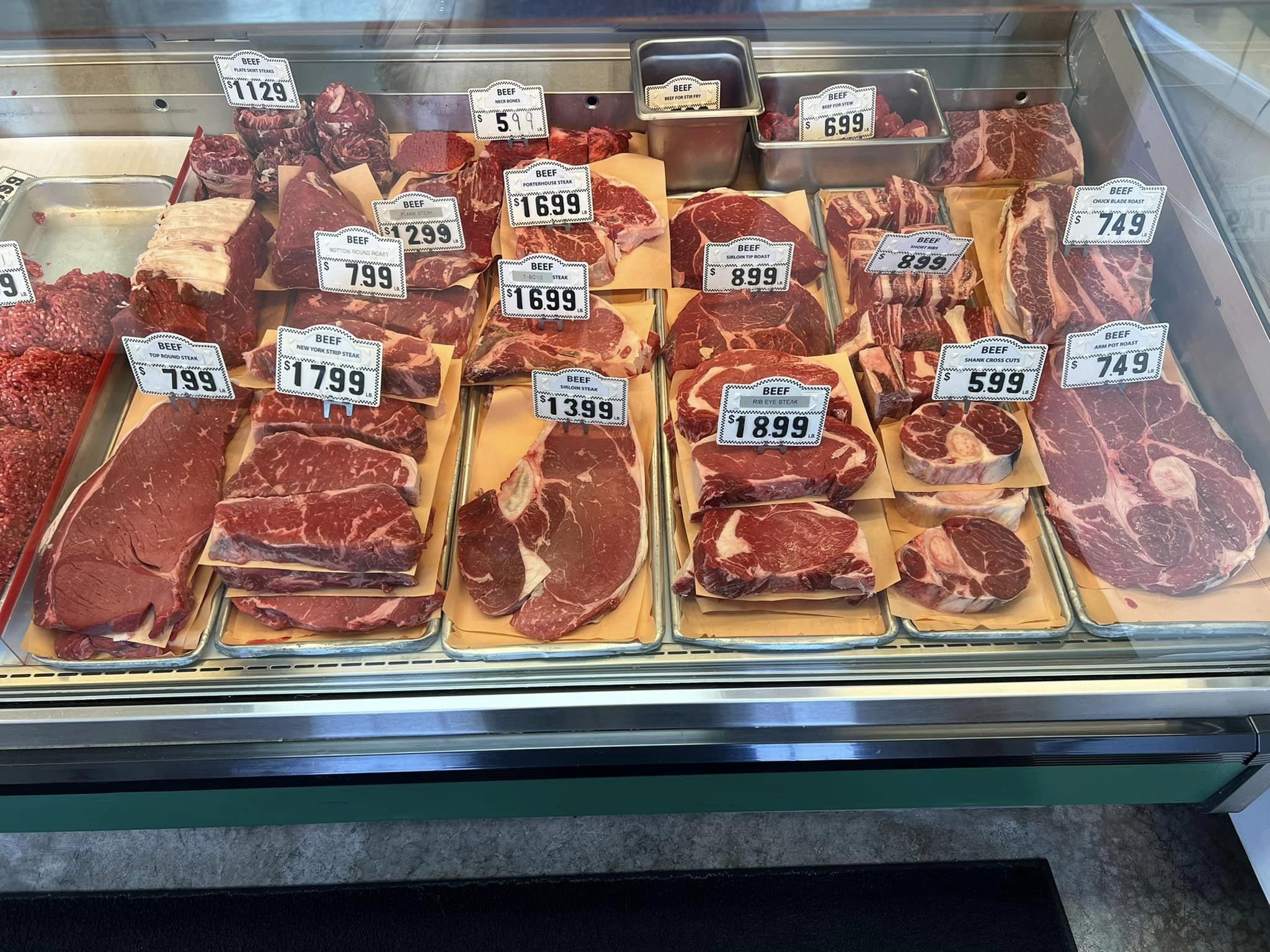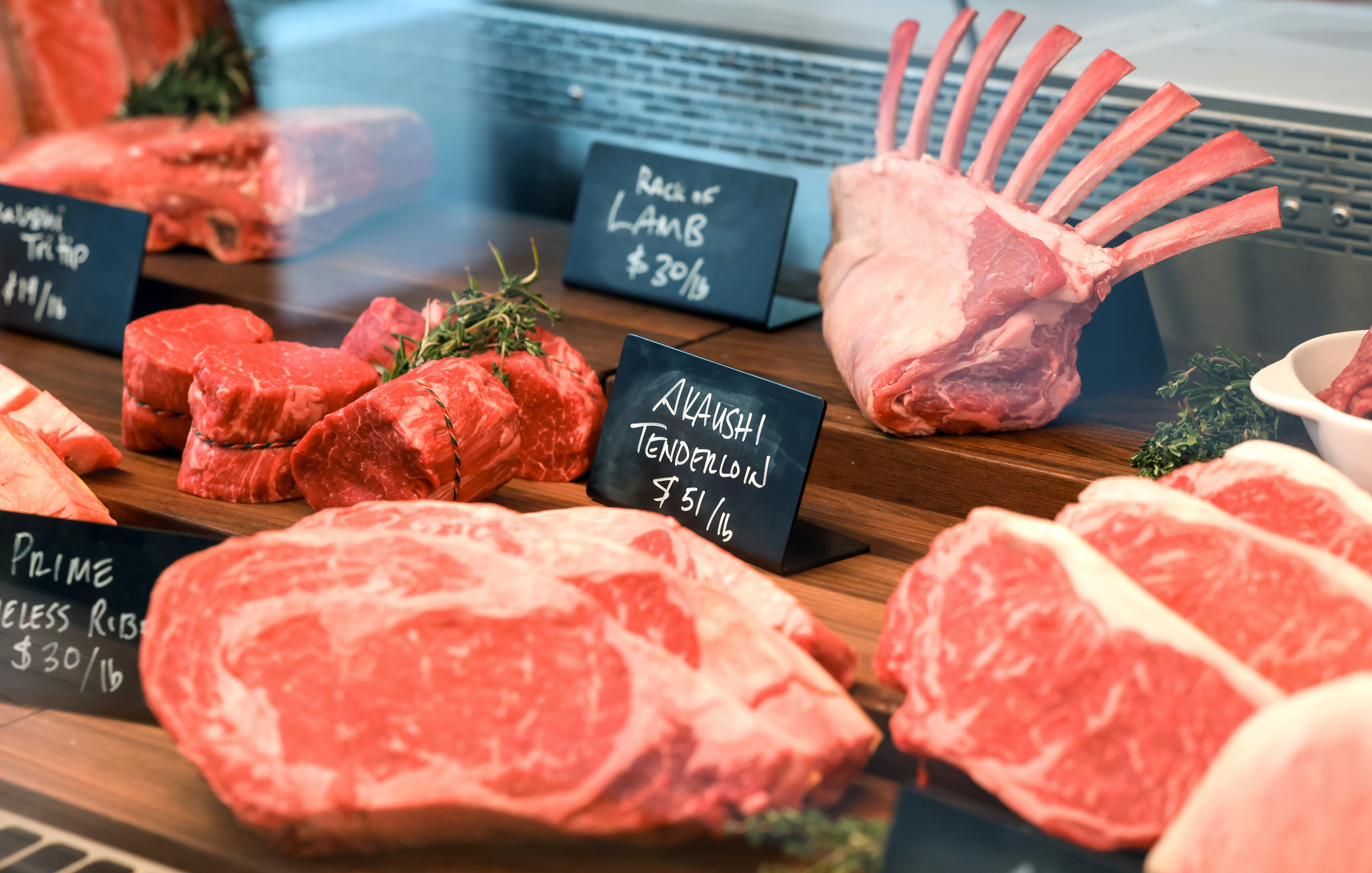Reveal the Art of the Butcher's Cut in a Modern Meat Market
In the ever-evolving landscape of modern meat markets, the butcher's cut has actually transcended its typical origins, merging age-old workmanship with modern practices. bagley farms meat market edwardsville il. Today's butchers are not merely cpus of meat; they are experienced artisans who stress sustainability and moral sourcing. Their know-how in picking and preparing cuts tailored to details cooking requirements offers an exceptional dining experience. What genuinely sets the modern-day butcher apart is their capacity to create a much deeper link in between customers and the beginnings of their meat. Exactly how do these masters equilibrium custom with development, and what ramifications does this have for the future of meat consumption?
Advancement of Butchery Methods

The mid-20th century saw butchery techniques even more improved by scientific understandings into muscle biology and meat aging, enhancing both inflammation and preference. Innovations like vacuum cleaner packaging and refrigeration prolonged product shelf-life, allowing butchers to diversify offerings and improve quality assurance. This duration additionally marked the rise of customized equipment, such as band saws and meat slicers, which enhanced precision and effectiveness in meat handling.
Digital systems now help in monitoring pet provenance and enhancing cuts to fulfill specific client preferences. In addition, a resurgence in artisanal butchery has actually arised, blending typical abilities with contemporary knowledge to provide to customers looking for ethical and lasting meat alternatives.

Comprehending Meat Cuts

Recognizing the complexities of meat cuts is essential for both butchers and customers looking for high quality and worth. Each cut originates from a different component of the animal, presenting one-of-a-kind flavors, structures, and cooking methods. Proficiency of these differences not just enhances culinary experiences but additionally makes the most of the energy of each carcass. For butchers, specific cuts mirror ability and respect for the craft, ensuring very little waste and ideal return.
The primary groups of meat cuts include primitive, sub-primal, and retail cuts. Butchers then break these down even more right into sub-primal cuts, prior to lastly creating retail cuts available to consumers, like ribeye or tenderloin.
Comprehending muscle mass composition is important; muscles utilized a lot more often by the animal tend to be harder and are best fit for sluggish food preparation approaches, while less-used muscles, like those located in the loin, are a lot more tender and perfect for cooking or roasting. Experience with these differences equips customers to make informed selections, enhancing their culinary undertakings.
Choosing High Quality Meat
Selecting the appropriate meat includes more than simply picking an aesthetically enticing item from the screen. The art of selecting high quality meat requires a discerning eye and understanding of particular attributes that indicate freshness and excellence. To start with, take note of the shade; beef must have a brilliant, cherry-red shade, while lamb should display a soft pink tone, and pork a pale pink. This suggests the meat is fresh and hasn't been subjected to oxygen for also lengthy.
Secondly, consider the marbling, which refers to the white flecks of fat within the muscle mass. Correct their website marbling is a vital indicator of inflammation and taste, as it thaws during food preparation, boosting the meat's juiciness. Keep in mind, greater marbling often associates with premium quality cuts, such as USDA Prime.
Structure is one more crucial factor; meat ought to feel solid to the touch, not slimed or overly soft. Furthermore, bear in mind the fragrance. Fresh meat must have a tidy, neutral smell, devoid of any type of sour or repulsive smells.
Matching Cuts With Food Preparation Techniques
Effectively combining cuts of meat with the suitable food preparation methods is important for attaining ideal flavor and structure. These approaches enhance the meat's all-natural tastes and guarantee a juicy coating.
Conversely, harder cuts like brisket and chuck roast are rich in collagen, which breaks down right into gelatin when prepared gradually. These cuts are ideal for braising or sluggish roasting, allowing the meat to soften gradually and develop deep, complex flavors. Cuts such as brief ribs and pork shoulder get on well with slow-cooking techniques, where extended cooking times transform their durable structures into succulent recipes.
Lamb shanks and oxtail, which need extended cooking to soften, are best prospects for cooking or sluggish simmering. These methods coax out abundant, passionate flavors while keeping dampness. By comprehending the distinct qualities of each cut, cooks and home chefs alike can elevate their cooking developments, guaranteeing each dish is both pleasing and memorable.
The Butcher's Duty Today
Browsing the developing landscape of the modern meat market, the butcher's function today extends past mere prep work of cuts. Contemporary butchers are culinary craftsmens, teachers, and supporters for sustainable techniques. They connect the void between the ranch and the fork by guaranteeing moral sourcing, comprehending pet husbandry, and prioritizing openness in the supply chain. This shift mirrors the growing customer need for high quality over amount, where provenance and animal well-being are paramount.
In enhancement to crafting precise cuts, butchers currently involve directly with clients, supplying cooking advice and customizing options to suit individual requirements and preferences. Their competence in meat aging, marbling, and taste profiles equips customers to make informed decisions, improving their cooking experiences. This personalized service exhibits the butcher's advancing role as a trusted consultant in the kitchen area.
In addition, butchers are pivotal in reducing waste, using entire pets to develop varied items that site such as sausages and stocks - bagley farms meat market edwardsville il. This comprehensive method not only appreciates the pet yet additionally straightens with modern click this site sustainability objectives. In this way, the modern butcher embodies both tradition and development, adapting to an ever-changing market while protecting the creativity and stability of their craft

Conclusion
The modern butcher's craft elaborately weaves traditional strategies with contemporary developments, stressing sustainable practices and moral sourcing. Mastery in recognizing diverse meat cuts and quality indications empowers butchers to give educated recommendations, straightening particular cuts with optimal food preparation methods. This expertise not just raises culinary experiences however likewise strengthens the connection between consumers and the origins of their food. By recognizing historical techniques while accepting modern demands, the butcher's function continues to be important in today's sophisticated meat market.